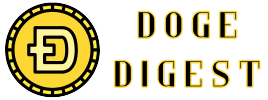In the ever-evolving world of cryptocurrency, Dogecoin has carved out a unique place-part meme, part movement, and entirely digital treasure. But as with any valuable asset, safeguarding your Dogecoin is paramount. Whether you’re a seasoned hodler or a curious newcomer, understanding how to protect your digital coins is essential to navigating this vibrant landscape safely. This article explores smart wallet security tips that can help you keep your Dogecoin secure, giving you peace of mind as you hold, trade, or simply admire your crypto stash.
Choosing the Right Wallet for Your Dogecoin
When it comes to securing your Dogecoin, not all wallets are created equal. It’s essential to choose a wallet that not only safeguards your funds but also aligns with your usage habits. Hardware wallets, often praised for their ironclad security, keep private keys offline, making them nearly impervious to hacking attempts. Conversely, software wallets offer convenience and quick access but require vigilant protection against malware and phishing attacks.
To make a well-informed decision, consider factors such as:
- Security Features: Look for wallets with two-factor authentication, multi-signature support, and encryption protocols.
- User Experience: An intuitive interface reduces human error, especially for newcomers navigating the crypto space.
- Compatibility: Ensure the wallet supports Dogecoin and integrates smoothly with your preferred devices.
- Backup & Recovery: Reliable backup options prevent permanent loss if your device fails.
| Wallet Type | Security Level | Ease of Use | Best For |
|---|---|---|---|
| Hardware Wallet | High | Moderate | Long-term Holders |
| Mobile Wallet | Medium | High | Frequent Traders |
| Desktop Wallet | Medium-High | Moderate | Enthusiasts & Experienced Users |
| Web Wallet | Low-Medium | High | Beginners & Casual Use |
Securing Your Wallet with Strong Authentication Methods
Protecting your digital assets starts with choosing authentication methods that go beyond simple passwords. While a strong password is essential, integrating multi-factor authentication (MFA) drastically reduces the risk of unauthorized access by requiring users to verify their identity through multiple steps. Whether it’s a text message code, an authenticator app, or a hardware token, each additional layer strengthens the defense against phishing attempts and brute-force attacks.
Biometric authentication methods are rapidly becoming a reliable option for wallet security. Features such as fingerprint scanners, facial recognition, or voice ID add a dynamic layer that’s almost impossible to replicate. When combined with traditional password protection, biometrics create a seamless yet powerful barrier, especially for mobile wallets where quick, secure access balances convenience and safety.
Consider exploring hardware wallets or dedicated security keys for the highest level of protection. These devices store your private keys offline, making them immune to common cyber attacks targeting connected devices. The table below outlines common authentication methods along with their security levels and ease of use:
| Authentication Method | Security Level | Ease of Use |
|---|---|---|
| Password Only | Low | High |
| Multi-Factor Authentication | Medium | Medium |
| Biometric + Password | High | High |
| Hardware Wallet + PIN | Very High | Medium |
Best Practices for Backup and Recovery of Wallet Data
When it comes to safeguarding your Dogecoin wallet, creating reliable backups is non-negotiable. Start by exporting your private keys or seed phrases and storing them securely offline. Avoid digital clutter by refraining from taking screenshots or saving sensitive info on cloud services that may be vulnerable to hacking. Instead, consider writing your recovery phrases on high-quality paper or investing in specialized metal backups designed to withstand fire and water damage.
Regular testing of your recovery process is equally important. A backup that cannot be restored is worthless during an emergency, so periodically test your wallet restoration on a separate device or test environment. This practice confirms that your wallet data is accurately preserved and that you can regain control swiftly if needed.
- Store multiple backup copies in geographically different, secure locations.
- Encrypt backups to add an extra security layer against unauthorized access.
- Update backups after every significant wallet activity or Dogecoin transfer.
- Keep your wallet software up to date to prevent compatibility issues during recovery.
| Backup Type | Pros | Cons |
|---|---|---|
| Paper Backup | Offline and immune to hacking | Fragile and prone to physical damage |
| Encrypted USB Drive | Portable with encryption protection | Risk of hardware failure or theft |
| Metal Backup Plate | Durable, fireproof, waterproof | Costlier and less common |
Recognizing and Avoiding Common Security Threats
In the fast-evolving world of cryptocurrency, threats lurk in the shadows, waiting to exploit the smallest vulnerability in your Dogecoin wallet. Phishing attacks remain one of the most common pitfalls-fraudulent emails or websites that mimic legitimate services to steal your private keys or passwords. Always double-check URLs and avoid clicking links from unknown sources. Another sneaky danger is malware, especially keyloggers and trojans designed to capture your credentials the moment you type them. Keeping your device’s security robust with reputable antivirus tools can serve as a vital first line of defense.
Not all threats come from the outside; sometimes user habits unknowingly invite risk. For instance, using weak or reused passwords leaves wallets vulnerable to brute force attacks. Opt for strong, unique passphrases, and consider using password managers to handle the complexity. Additionally, public Wi-Fi networks are breeding grounds for man-in-the-middle attacks where hackers intercept your transactions. Make a habit of accessing your wallet only through private and encrypted connections, such as VPNs, to keep your Dogecoin dealings confidential and secure.
Understanding the common tactics attackers use helps build an effective defense strategy. Below is a quick reference of threats and preventive measures to keep handy:
| Threat | What It Does | Best Defense |
|---|---|---|
| Phishing | Steals login data by impersonation | Verify URLs & avoid suspicious links |
| Malware | Records keystrokes, infects devices | Use antivirus & update software regularly |
| Weak Passwords | Easily cracked by attackers | Create strong, unique passwords/passphrases |
| Public Wi-Fi Attacks | Intercepts transaction info | Use VPNs & avoid untrusted networks |
By staying informed and vigilant, you transform your wallet from an easy target into a fortress, ensuring your Dogecoin stays exactly where it belongs-in your hands.
Staying Updated with Wallet Software and Security Features
In the fast-evolving world of cryptocurrency, regular updates to your wallet software are not just recommended-they’re essential. Developers constantly patch vulnerabilities and introduce enhanced encryption protocols that shield your Dogecoin from emerging threats. By neglecting these updates, you risk exposing your holdings to security flaws hackers are eager to exploit. Make it a habit to enable automatic updates or check for new versions periodically to safeguard your digital assets.
Security features within wallet applications have grown smarter and more intuitive. Modern wallets incorporate tools like biometric authentication, multi-signature approvals, and hardware integration, which together create a fortress around your Dogecoin. To optimize your security, explore these options and tailor them to your comfort level. For instance, integrating a hardware wallet can drastically reduce exposure to online risks, while multi-factor authentication adds an extra lock on your wallet’s entrance.
Keeping track of updates and new features can feel overwhelming, but a simple checklist can help you stay organized:
- Subscribe to official wallet newsletters for timely announcements.
- Follow trusted crypto communities on social media for peer-shared experiences.
- Verify update authenticity by downloading only from official sources.
| Security Feature | Benefit | Update Frequency |
|---|---|---|
| Biometric Lock | Quick & secure login | Monthly |
| Multi-Signature | Fraud prevention | Quarterly |
| Hardware Wallet Support | Offline asset protection | Bi-annually |
| Encryption Algorithms | Data integrity | With major updates |
Q&A
Q&A: Guarding Your Dogecoin – Smart Wallet Security Tips
Q1: Why is it important to secure my Dogecoin wallet?
A1: Your Dogecoin wallet holds your digital treasure. Without proper security, hackers or scammers could gain access and drain your funds. Just like protecting cash in your pocket, securing your wallet ensures your Dogecoin stays safely yours.
Q2: What types of wallets are safest for storing Dogecoin?
A2: Hardware wallets, like Ledger or Trezor, are considered the gold standard-they keep your private keys offline, away from potential cyber threats. Software wallets are convenient but more vulnerable, so choose reputable ones with strong security features.
Q3: How can I create a strong password for my wallet?
A3: Think of your password as a fortress gate-make it complex and unique. Combine uppercase and lowercase letters, numbers, and special symbols. Avoid common words or easily guessable info. Using a password manager can help generate and store strong passwords effortlessly.
Q4: What is two-factor authentication (2FA), and should I use it?
A4: Two-factor authentication adds an extra lock to your wallet by requiring a second verification step-like a code from your phone-besides your password. This dramatically reduces the risk of unauthorized access and is highly recommended.
Q5: Should I back up my Dogecoin wallet? How?
A5: Absolutely! Backups are your safety net in case your device fails or is lost. Write down your wallet’s seed phrase or recovery keys on paper and store it securely offline, away from fire, water, and prying eyes. Avoid digital backups that could be hacked.
Q6: Is public Wi-Fi safe for accessing my Dogecoin wallet?
A6: Public Wi-Fi is like an open window for hackers to peek inside. Avoid logging into your wallet on unsecured networks. If you must, connect through a trusted VPN to encrypt your traffic and protect your information.
Q7: How do I recognize phishing attempts targeting my Dogecoin wallet?
A7: Phishing often comes via suspicious emails or messages pretending to be official wallet services. Watch for urgent requests to share your private keys, strange URLs, or poor spelling and grammar. Always verify links and never share sensitive info.
Q8: Can I share my Dogecoin wallet address publicly?
A8: Yes! Your public wallet address is meant to receive Dogecoin and can be safely shared. Just don’t mix it up with your private keys or seed phrase, which must remain secret at all times.
Q9: What should I do if I suspect my wallet has been compromised?
A9: Act quickly-transfer your Dogecoin to a new, secure wallet with a freshly generated seed phrase. Change all related passwords and monitor for any abnormal activity. If needed, seek help from trusted community forums or official support channels.
Q10: Any final tips for keeping my Dogecoin truly secure?
A10: Stay informed and vigilant. Regularly update your wallet software, never rush into transactions, and treat your private keys like precious jewels. When in doubt, pause and double-check-your Dogecoin’s safety depends on your smart habits.
In Conclusion
As the world of Dogecoin continues to evolve and capture the imagination of crypto enthusiasts, safeguarding your digital assets becomes not just a recommendation, but a necessity. By embracing smart wallet security practices-from choosing the right type of wallet to implementing robust authentication measures-you build a fortress around your coins that’s as lively and resilient as the Dogecoin community itself. Remember, in the vast expanse of the blockchain, your vigilance is the key to keeping your Dogecoin safe and sound. So guard wisely, stay informed, and let your digital journey be as secure as it is exciting.






